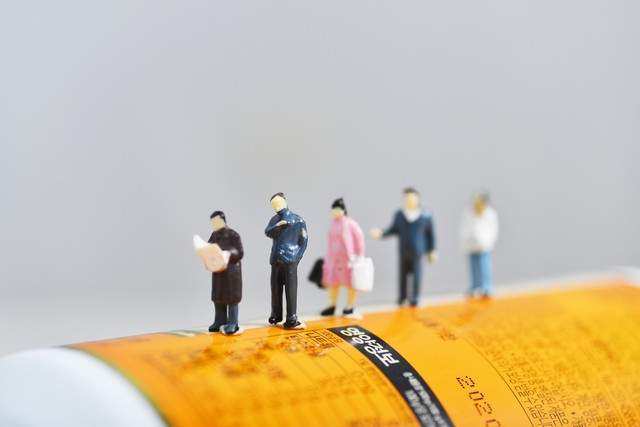When facing the complex and challenging disease of muscular dystrophy, patients not only have to deal with various physical discomforts and limitations but also endure significant psychological pressure. However, it is these seemingly insurmountable obstacles that have spurred our determination to explore a more comprehensive and humane rehabilitation path. This article will delve into how psychological adjustment and exercise complement each other, contributing significantly to improving the quality of life for patients with muscular dystrophy, portraying a picture of hope and resilience in the rehabilitation process.
I. Psychological Adjustment: The Beacon of the Mind, Illuminating the Path to Recovery
When dealing with muscular dystrophy, patients often experience negative emotions like anxiety, depression, and fear. These emotions not only affect the psychological well-being of the patients but may also exacerbate physical pain and discomfort, leading to a vicious cycle. Therefore, psychological adjustment is an indispensable part of the patient’s recovery process.
1. Recognition and Acceptance
First and foremost, patients need to learn to recognize and accept their condition. This does not mean giving up treatment or surrendering to fate but facing reality with a more calm and rational attitude. Through psychological counseling, reading relevant books, or joining patient support groups, patients can gain a deeper understanding of their illness, thus alleviating the fears and anxieties arising from ignorance.
2. Emotional Management
Emotional management is at the core of psychological adjustment. Patients can manage their emotions by practicing meditation, deep breathing, mindfulness exercises, etc., to reduce the impact of negative emotions. Additionally, sharing one’s feelings with family, friends, or a mental health counselor can effectively alleviate psychological stress and receive emotional support.
3. Setting Goals and Maintaining Hope
Setting practical and achievable rehabilitation goals and striving for them are key to maintaining hope and motivation. These goals can be short-term, such as completing a certain amount of rehabilitation training every day, or long-term, such as improving self-care abilities or participating in social activities. By continuously achieving these goals, patients can feel their progress and growth, thereby enhancing their confidence and courage.
II. Exercise: Reshaping the Body, Unleashing Life Potential
For patients with muscular dystrophy, exercise is not only a means to strengthen the body and alleviate muscle pain but also a vital way to unleash life potential and improve quality of life.
1. Personalized Exercise Plan
Since each patient’s condition and physical condition are unique, developing a personalized exercise plan is crucial. Physical therapists will design appropriate exercise programs and intensity based on the specific circumstances of the patient, ensuring that the exercise is both safe and effective. These exercises may include strength training, endurance training, flexibility training, as well as balance and coordination training, among others.
2. Low-Intensity Aerobic Exercise
For patients with muscular dystrophy, low-intensity aerobic exercises such as walking, swimming, cycling are ideal choices. These exercises can promote blood circulation, improve cardiovascular function, and reduce the burden on joints and muscles. Patients can choose suitable exercise methods based on their physical condition and interests and gradually increase the duration and intensity of exercise.
3. Strength Training and Muscle Protection
Although the muscle strength of patients with muscular dystrophy may gradually weaken, appropriate strength training is still beneficial. This can not only slow down muscle atrophy but also improve muscle strength and endurance. During strength training, patients need to pay attention to protecting joints and muscles, avoiding injuries caused by excessive force or improper posture.
4. Integration of Daily Activities
In addition to specific rehabilitation training, patients should also integrate exercise into their daily lives. For example, using stairs instead of elevators for going up and down, including simple strength training exercises while doing household chores, or engaging in stretching and relaxation exercises during spare time. These daily activities not only help maintain physical function but also improve the patient’s self-care abilities and confidence.
III. The Perfect Combination of Psychological Adjustment and Exercise
Psychological adjustment and exercise are not isolated in the recovery process of patients with muscular dystrophy but complement each other and promote each other. When combined perfectly, they can produce unexpected effects, comprehensively enhancing the quality of life for patients.
1. Enhancing Motivation and Persistence
Psychological adjustment can help patients develop a positive mindset and firm beliefs, thereby enhancing motivation and persistence in rehabilitation exercises. When faced with difficulties and challenges, maintaining an optimistic and resilient spirit enables patients to continuously motivate themselves to move forward.
2. Stress and Pain Relief
Exercise can relieve stress and tension in the body, alleviate muscle pain and stiffness. Additionally, chemicals such as endorphins produced during exercise can improve the patient’s emotional state, reducing the impact of negative emotions such as anxiety and depression. This dual relaxation of body and mind contributes to patients dealing better with the challenges posed by the disease.
3. Improving Quality of Life and Happiness
The combination of psychological adjustment and exercise not only helps improve the physical condition and mental health of patients but also significantly enhances their quality of life and happiness. By participating in rehabilitation training and daily activities, patients can experience their progress and growth; by communicating and sharing experiences with others, patients can build closer interpersonal relationships and a supportive social network. These positive experiences and feelings will become valuable assets and sources of motivation for patients in the recovery process.
In the long and arduous journey of recovery from muscular dystrophy, the combination of psychological adjustment and exercise has lit a beacon of hope for patients. Even in the face of great difficulties and challenges, as long as one maintains a positive attitude, firm beliefs, and relentless efforts, they can surely emerge from the shadows and embrace the sunlight.


